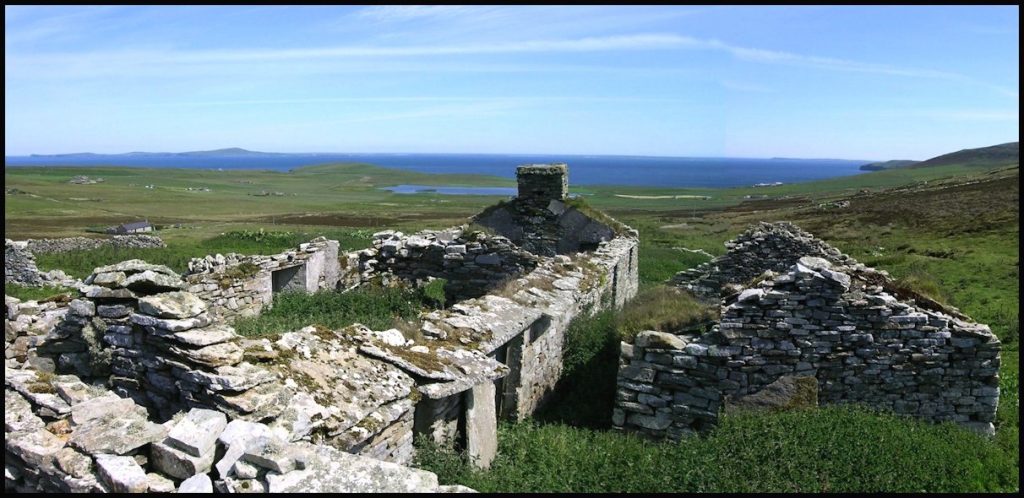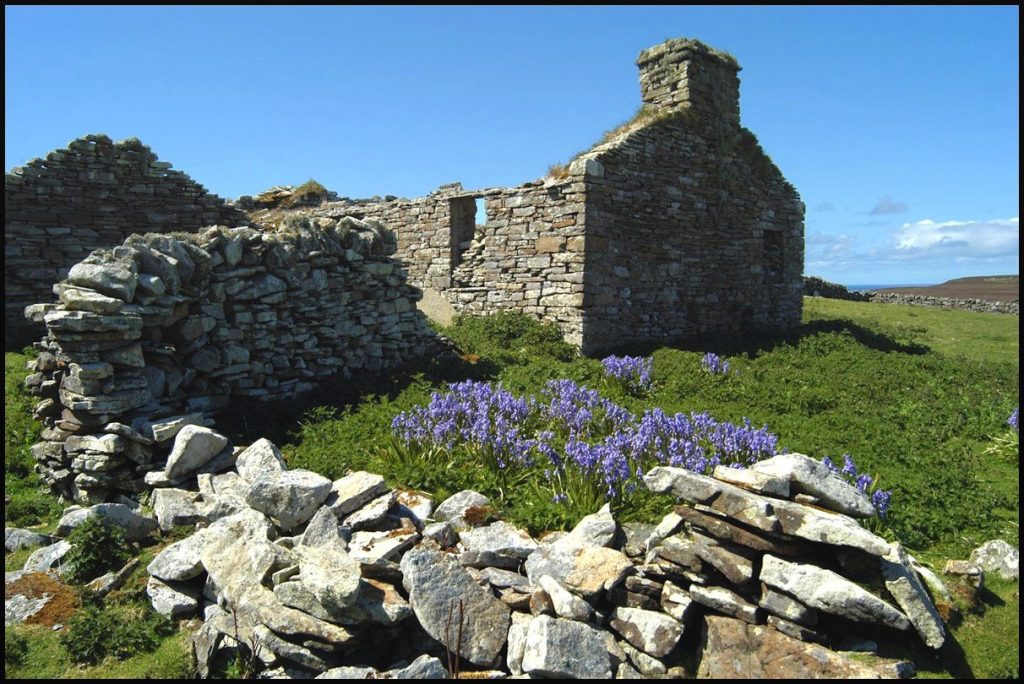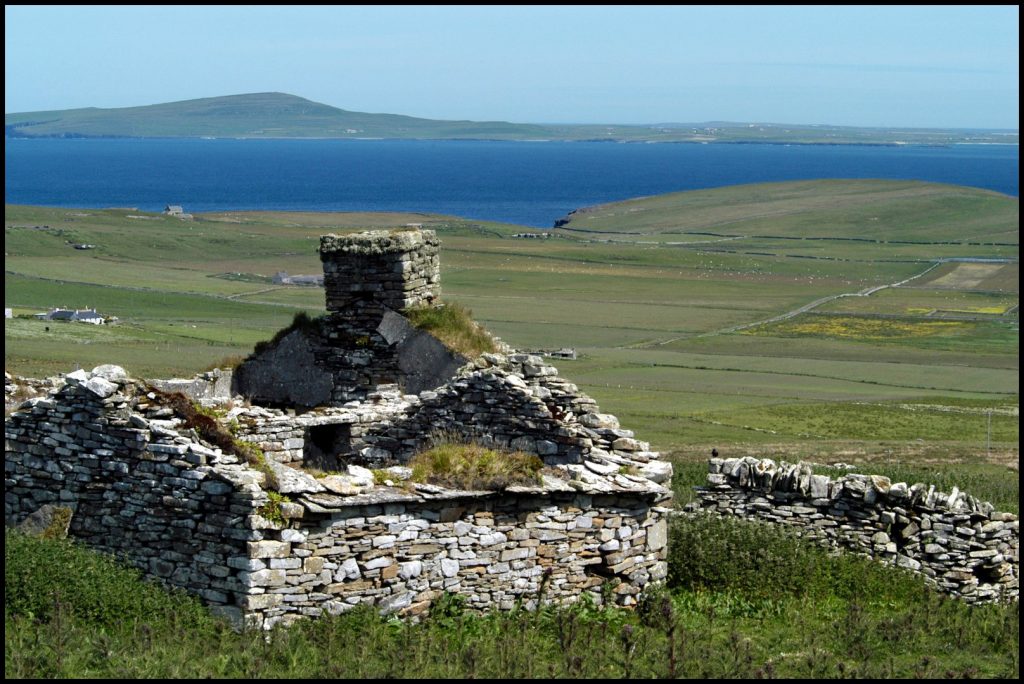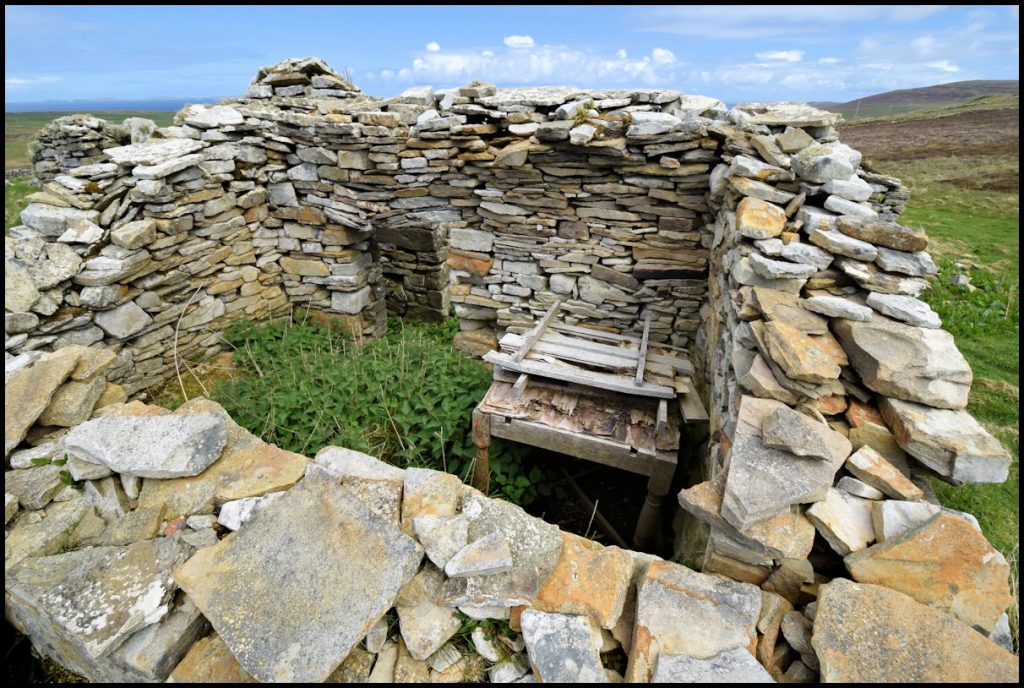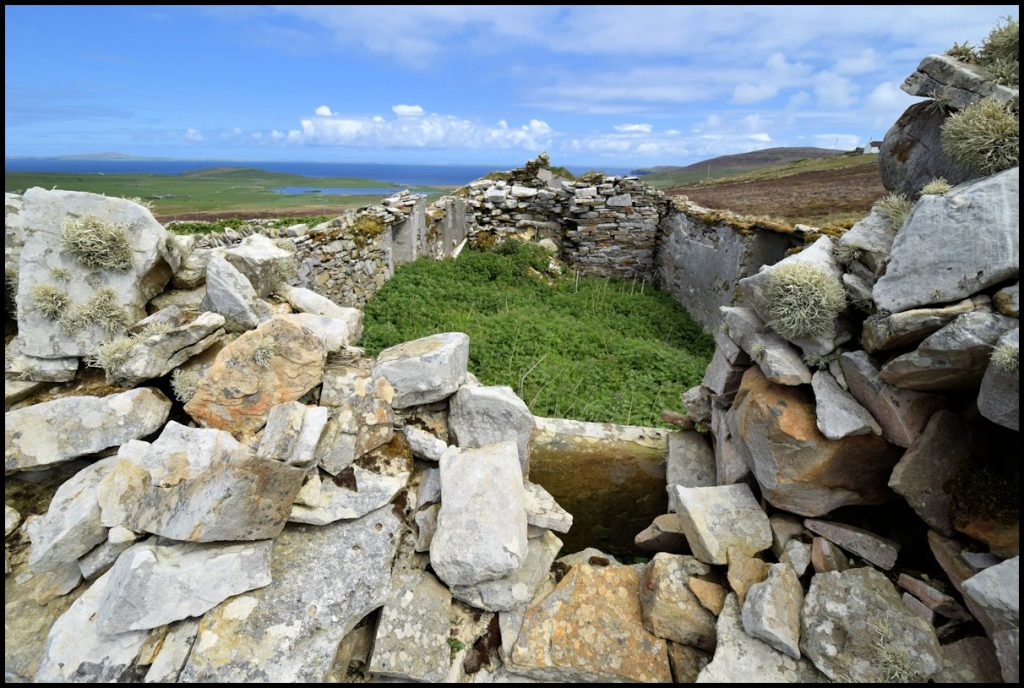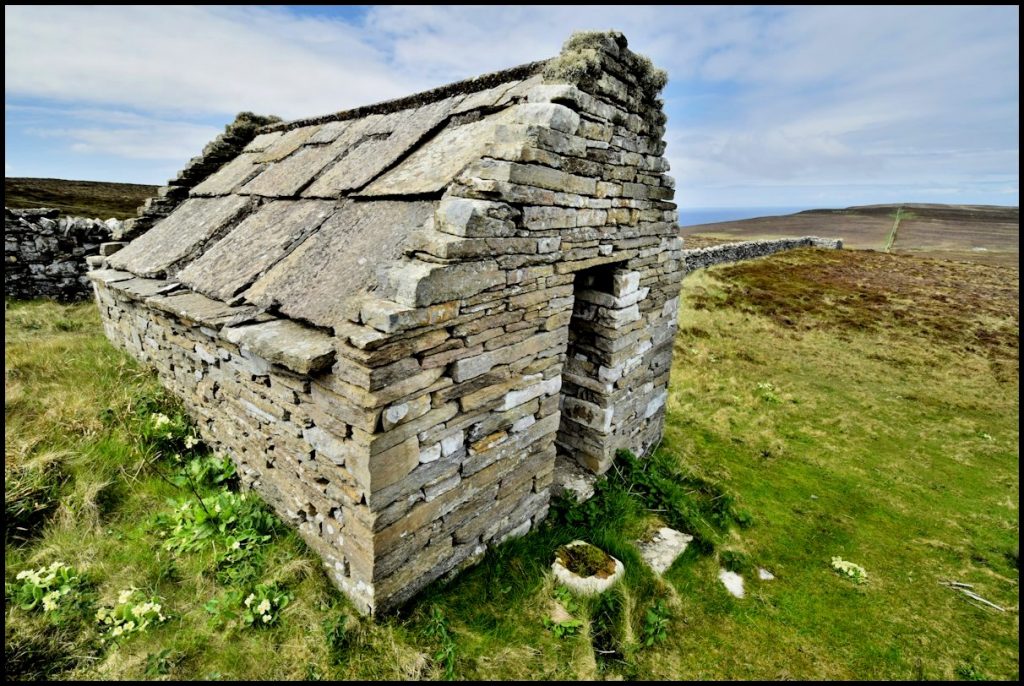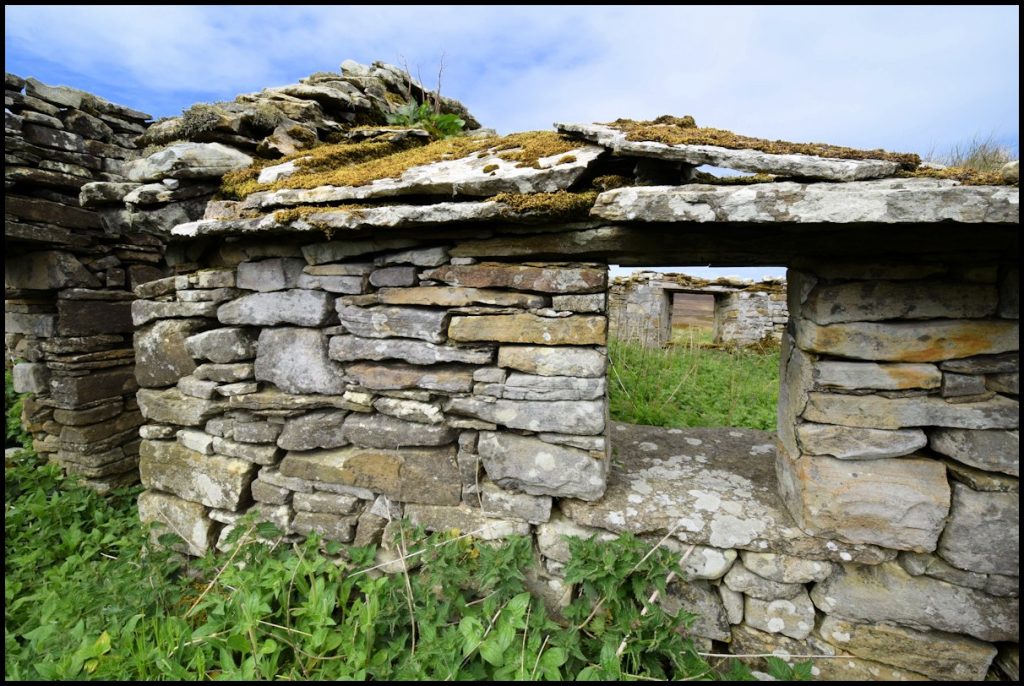This is Lower Blackhammer, also called the Manse, on the hill overlooking Wasbister. In 1851 it was occupied by the Louttit family, 72-year-old stonemason Alexander, his wife 55-year-old Janet Craigie, and two of their six children – 28-year-old son Edward, and 15-year-old daughter Betsy, both of whom were employed as agricultural labourers. Edward Louttit was later expelled from Rousay by the laird for taking seagull eggs from the Lobust. He went to live in Stronsay.
The 1871 census tells us Lower Blackhammer was still occupied by Alexander, then 92-years-old and described as a farmer of six acres, and his wife Janet who was then 76. The oldest of their three daughters was Barbara, then 42-years-old and unmarried. She was employed as an agricultural labourer, and her illegitimate 18-year-old son William Louttit, earned money as an apprentice shoemaker. In 1873 the extent of the land at the Manse covered 15.3 acres, for which Barbara paid an annual rent of £1.
By 1891 Alexander and Janet Louttit had passed away, but Barbara still lived there, now 65 years old and described as a ‘small farmer.’ Also at the Manse was 37-year-old washerwoman Margaret Gibson, widow of William Louttit of Maybank near the Wasbister School who passed away in 1884. She was known as Maggie o’ Maybank and they had three children, Maggie Jessie, born in 1877, Isabella, born in 1878, and William, born in 1882. Maggie o’ Maybank died on May 17th 1931 at the age of 79.
In the early 1900s the Manse was occupied by the Donaldson family. Alexander Grieve Donaldson was the son of Thomas Donaldson and Mary Sabiston, Watten, Egilsay, and he was born in 1887. In 1914 he married Maggie Jessie Inkster, daughter of John Alexander Inkster and Jane Irvine, Woo, who was born in 1895. They raised a family of nine children. Second oldest was Mary Jane [known as Jeannie]. She was born in 1917 and left the Manse at the age of twelve when the family moved to Vacquoy.
Her father “Sandy” Donaldson, (Alec to his wife), worked as a blacksmith, first in the smithy below Feolquoy, then at the smiddy close to Quoyostray. They kept cabbage in the plantie-crue – about 50 young plants. Jeannie reminisces about her younger days in Wasbister:-
“The east part of the Manse was the original house, and one of Jeannie’s earliest memories was that it contained hens. At that time it was roofless, but it was later repaired and incorporated with the rest of the house. Jeannie remembered watching from a window at the Manse as Sally of Westness’s wedding procession made its way down the public road and round the Loch of Wasbister.
The children from the Manse went to school via Pig Street. There was a “duckie pond” below the well; the byre had hens in the inner piece and a cow, a calf, and a goat in the outer piece. The shed behind the west side of the house had ashes and hens and was known as the “ashie hoose.”
St Mary’s Church, on the Westside, is by the broch. Jeannie was told that Nelson’s cabin boy came from the Westside and was buried in the churchyard. The school above the bend in the road on the Westside was for the Quandale children only.
Jennie Murray, the “Fat Wifie,” lived in the house between Greysteen and the Manse. She sat in the blacksmith’s place for food when he was late home from work.
No-one lived at Helliatrow (Upper Kirkgate) in Jeannie’s time. Mary Mowatt, an ex-milliner, lived in the Garrett – others lived in Shalter and Everybist. Her nephew (?) was mayor of Johannesburg.
The Sinclairs lived in the Upper House at Blackhammer. There was Sena, who was tall, and Mary, who was fat, and they were sisters. Charlie Logie stayed there as a boy. His father Willie Logie lived at Mount Pleasant and when his wife died Willie went to sea, and it was at this time that Charlie lived with the Sinclairs in the Upper House.
Jock and Mamie Johnston lived in the Lower House, having returned from America (Canada ?). Mamie was a Sinclair before her marriage to Jock. Their daughter May became Mrs Baikie and lived in Kirkwall. May was mannish. Jeannie remembered baby-sitting in Blackhammer and listening to the rain on the metal roof.
Tom Marwick worked at Trumland House but was later sacked. When the Johnstons moved he and his wife Emma moved into the Lower House at Blackhammer. Emma was Ivy Cooper Craigie’s sister, and she and Tom had one daughter called Emma – who died seven or eight years later in the 1920s.
Jean of Kirkgate went off with Tom Marwick on his motorbike, along with a bundle containing money, pension book and a blanket – leaving Howie. Later she came back to him and stayed with him until he died.”
[In 1941 Jeannie married fisherman David Gibson, son of John Gibson of Hullion later Brough, and Margaret Craigie of Turbitail].
